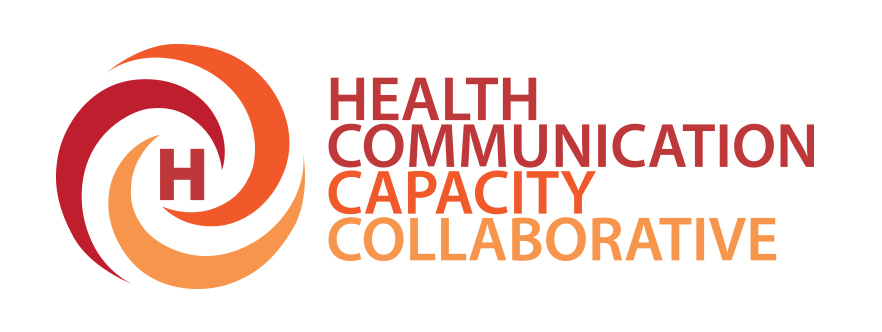Activities and interventions allow for programs to convey key messages through a variety of communication approaches and channels (mothers’ groups and mass media are two examples of channels for behavior change). Decide on messaging and channel selection together in order to effectively communicate with the intended audiences. Carefully select activities based on the type of messaging, ability to reach the intended audience through channels they use, timeline, cost and available resources.
Use findings from the situation analysis to guide selection of activities and interventions.
A “Theory-Based Framework for Media Selection in Demand Generation Programs” can help inform channel selection decisions based on communication theory. Table 4, below, is an overview of strategic approaches. Any SBCC program should include activities across a range of different intervention types and communication channels. All selected interventions and channels should communicate mutually reinforcing messages. It is also important to link with other programs and systems. The following are examples of potential areas for linkages when designing an SBCC program for breastfeeding:
- Other FBOs, NGOs, and civil society organizations
- Other MCH programs that may or may not currently emphasize breastfeeding
- Nutrition programs, especially IYCF programs
- Women’s ministries and support programs (e.g., mothers’ groups, men’s groups, prayer groups)
- Quality of care improvement initiatives for service providers/clinics
- Pre-service education, continuing education, and in-service refresher training initiatives for clinical and non-clinical providers
- Labor rights initiatives
- Other cross-sectoral programs (e.g. child welfare, education, economic empowerment)
| Table 4: Overview of Strategic Approaches that can be used in SBCC |
| Advocacy: Advocacy operates at the political, social, and individual levels to mobilize political and social commitment for social change and/or policy change. Advocacy aims to create an environment to ask for greater resources, encourage fair allocation of resources, and remove barriers to policy implementation. A Guide for Advocates and Journalists for Helping Advance Infant and Young Child Nutrition in Ethiopia (http://www.aliveandthrive.org/sites/default/files/Women%27s_Association_Guide-2014.pdf) provides resources for raising awareness and engaging stakeholders in addressing nutrition-related gaps in policy. |
| Community Mobilization: Community mobilization is a participatory process through which individuals, groups, or organizations plan, carry out, and evaluate activities to improve lives of community members. A successful community mobilization effort not only solves problems but also increases the capacity of a community to identify and address its own needs. It can also include activities such as rallies, public meetings, folk dramas, folk songs and sporting events. FBOs could think of their sermons and prayer meetings as a type of community mobilization. For guidance on community mobilization, see Tearfund’s Mobilizing the Community: A PILLARS Guide. |
| Interpersonal Communication/Counseling: Interpersonal communication and counseling is on one-to-one communication and is often done with a trusted and influential communicator such as a religious leader, counselor, teacher, health provider or even volunteer. Counseling tools or job aids are usually produced to help improve these interactions. Those who will use the tools and aids should be trained to use them effectively. The Linkages Project web site has links to breastfeeding counseling information as well as counseling cards developed in several countries. |
| Distance Learning: Distance learning provides a learning platform that does not require attendance at a specific location. Rather, the students access course content from channels such as radio or the Internet and interact with their teacher and classmates through letters, telephone calls, SMS texts, email, chat rooms or internet sites. Distance learning courses can train clergy, lay leaders, communication specialists, community mobilizers, health educators, and service providers. Additional information on eLearning can be found at Global Health eLearning Center and PEPFAR eLearning Initiative. |
| Information and Communication Technologies (ICTs): ICTs are platforms for enabling communication and promoting the exchange of information through technology. ICTs include computer technologies, mobile phones, and the use of SMS and social media such as Facebook, Twitter, Linked In, blogs, e-Forums, Springboard, and chat rooms. This approach also includes web sites, e-mails, listservs, eLearning, eToolkits, and message boards. Digital media can disseminate tailored messages to the intended audience on a large scale while also receiving audience feedback and encouraging real-time conversations, combining mass communication and interpersonal interaction. “A Theory-Based Framework for Media Selection in Demand Generation Programs” and “Utilizing ICT in Demand Generation for Reproductive, Maternal, Newborn and Child Health: Three Case Studies and Recommendations for Future Programming” are useful resources for program managers looking to utilize ICT in SBCC activities. |
| Mass Media: Mass media can reach large audiences cost-effectively through radio, television, and newspapers. According to a review of mass media campaigns, those that follow the principles of effective campaign design and are well executed can have a small to moderate effect not only on health knowledge, beliefs, and attitudes, but on behaviors as well (Noar, 2006). Given the potential to reach thousands of people, a small to moderate effect will have a greater impact on public health than would an approach that has a large effect but only reaches a small number of people. |
| Social Mobilization: Social Mobilization brings relevant sectors such as organizations, policy makers, networks, and communities together to raise awareness and empower individuals and groups for action. It also allows them to work together towards creating an enabling environment and effecting positive behavior and/or social change. |
| Support Media/Mid-Media: Mid-media’s reach is less than that of mass media but can be useful in supporting SBCC. It includes posters, brochures, billboards, and other materials. |
Other helpful tips for designing SBCC interventions:
- Engage target audience members and other stakeholders in the design of interventions to ensure their views and realities are reflected.
- Design interventions that allow target audiences to discover for themselves rather than just be told what is right. One example is facilitated discussions using cue cards.
- Design interventions that stimulate discussion of barriers and how to overcome them.
Illustrative Example: Determine Activities and Interventions

